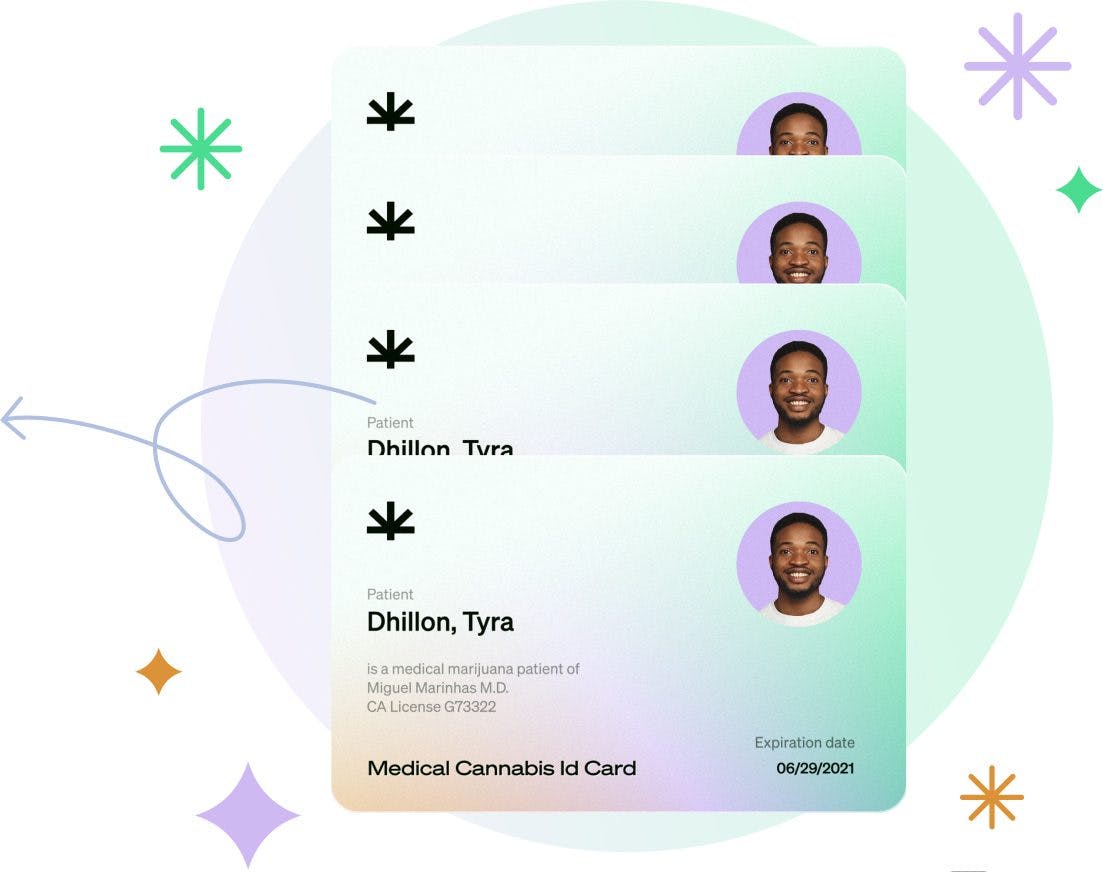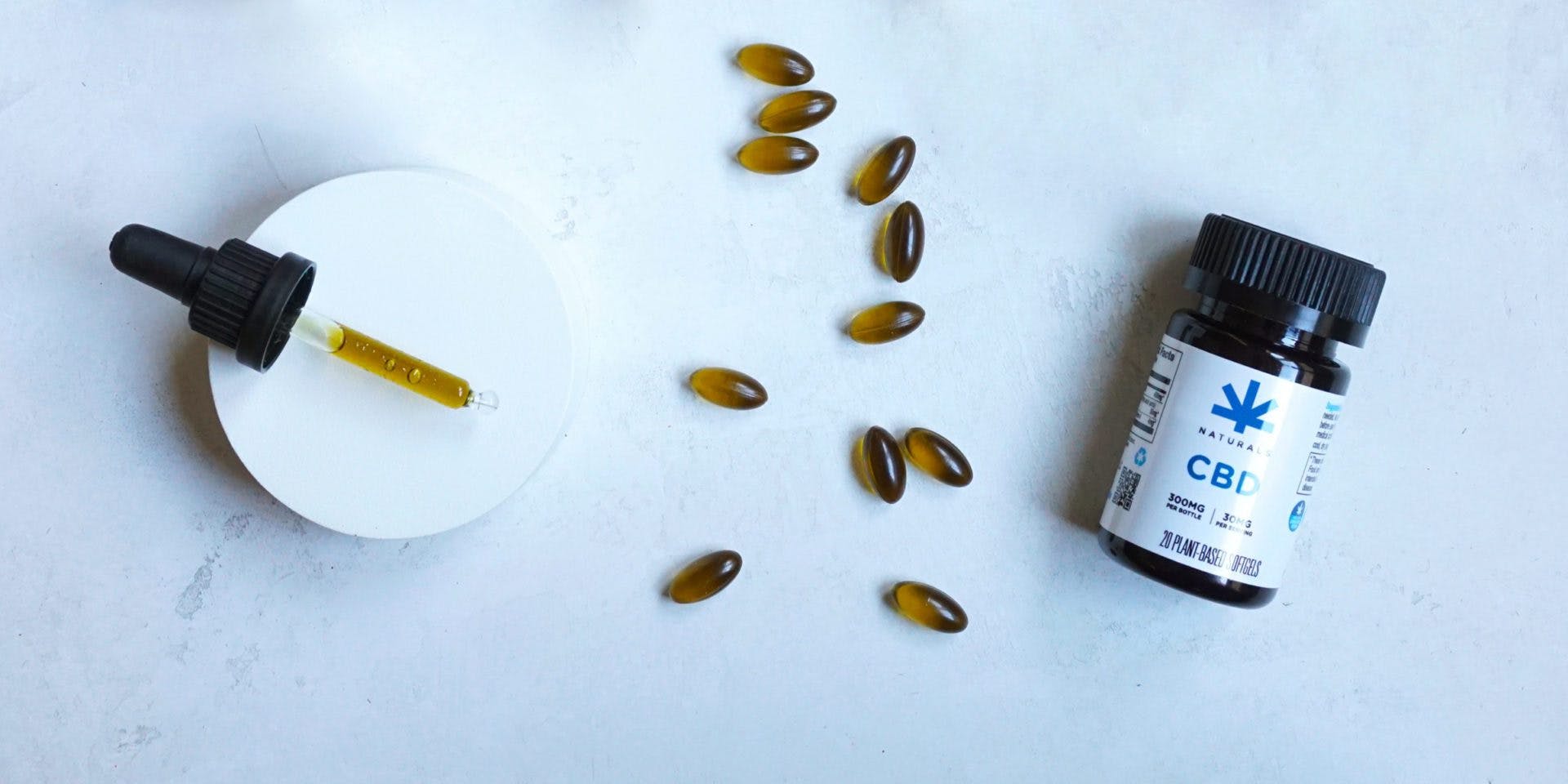Best Care, Best Value

Get your medical marijuana card online in minutes for just $99!
Quick and Easy Process
Get Approved or Your Money Back
Already a Leafwell patient?
Log in here
How to get a medical card Online.
1
Register Online with Leafwell
You can speak to a doctor and qualify for medical marijuana card online today.
2
Attend Your Online Consultation
Speak with a healthcare provider about whether medical cannabis is a good choice for you.
3
Get Approved Instantly
Our healthcare providers can approve you today. You’ll receive an approval email immediately after your consultation.
4
Get a Medical Card
Complete any state side requirements to acquire a digital or physical medical cannabis card.
Trusted by 300k+ patients
Benefits of Getting a Medical Card
Even if recreational cannabis use is legal where you live, there are multiple reasons to become a cardholder.
Save money
Medical cannabis patients often pay lower tax.
Easier Access
Medical cannabis patients also have access to a greater number of products and dispensaries.
Reciprocity
Many states recognize medical cards from other states so you can continue to purchase your medicine while travelling across the US.
About Medical Marijuana in the US
In 2022, recreational use is legal in 20 states, with 45 states having some kind of medical cannabis program. Each state has set up a slightly different program but the experts at Leafwell can help guide you through what you need to know about where you live.
Variations can include the amount of cannabis a medical cannabis patient may possess to whether they can grow their own medicine.
Some states include restrictive lists of qualifying conditions, while others allow people to qualify with any medical condition, trusting the healthcare providers to make the right recommendation for their patient.
How to qualify
In most states, you must be 18 years or older to qualify.
Some states accept out-of-state IDs but many require proof of residency.
Not all states require the patient to present medical records.
Caregivers are allowed in most state programs.
Minors usually need a caregiver to apply on their behalf.
Adults can also have caregivers in most states to help them access and take their medical cannabis products.
Medical Conditions
While some states leave the decision of who qualifies up to the healthcare provider, most have a list of conditions for which patients may qualify for a medical cannabis card.
Every state is different so make sure you check your state's program for their current list of qualifying conditions.
Medical cannabis can help a wide range of conditions:
There is increasing evidence that medical cannabis has a number of positive effects on numerous medical conditions. Find out more about which conditions benefit from medical marijuana on our research page.
Sign up
Already a Leafwell patient?
Log in here

Possession and Growing
Medical cannabis patients can usually carry higher quantities of product than recreational users. Every state limit is different so check your state’s information to ensure you stay legal.
Some programs also allow patients to grow their own medicine. In some states, there is an additional certification required to enable you to grow.
Do not take your cannabis over state lines. If you are moving around your state with cannabis, only carry what the law permits, and preferably locked away and safely kept.
Caregivers
Medical Marijuana patients can have a caregiver.
For most state programs, you qualify as a primary caregiver if:
01
You have been designated for that purpose by a legal medical marijuana user
02
You are consistently responsible for that person’s housing, health, and/or safety
03
The care you provide is independent of assistance you give the person in taking medical marijuana
04
You have cleared a criminal background check

Reciprocity
Some states recognize cards from other states, allowing travellers to continue to purchase as they move around the US.
This reciprocity is one key benefit for medical marijuana users. Unlike recreational cannabis users, medical marijuana users with a medical marijuana card can travel to the states listed above and purchase the medical marijuana they require while they are out of state.
Articles
See more posts
The Ultimate Guide to Getting a Medical Marijuana Card
Telehealth services like Leafwell make it easy to get a medical marijuana card, but meeting with a cannabis doctor is only the first part of the process.

What Is CBD?
Discover CBD, or Cannabidiol and learn more about the properties this key chemical in cannabis has for medical marijuana patients.

What Is It Like to See a Medical Marijuana Doctor?
What is it like to see a medical marijuana doctor? Learn more about the process, and what to expect during your Leafwell visit, in our guide.
Frequently asked questions about cannabis
How do I get a medical marijuana card?
The process is different state to state. Leafwell can help you navigate the process.
Most state programs follow this pattern:
- Meet with a licensed healthcare provider to get approved for medical cannabis
- Submit your certificate or recommendation either online or via mail to the state program
- Many states charge a fee at this time
- Once the state approves you, you’ll either receive a physical card in the mail or can download a digital version for your cell phone
To qualify for a medical card, you’ll need to discuss a qualifying medical condition with your healthcare provider. The full list of each state’s qualifying conditions can be found on our state pages.
Why do I need a medical marijuana card?
Here are some of the reasons why an Medical Marijuana Card is perfect for you:
- You’re tired of popping pills every day to numb your pain, with little or no effect. Or perhaps you’re worried about the side-effects they have on your body and mind. Think addiction, feeling “zombified” or “emotionless”, or the mentally-draining effects of having to take several pills at the same time at specific times of day.
- You suffer from nasty headaches/migraines, chronic pain or anxiety and don’t want the cornucopia of chemicals that most doctors will prescribe you.
- You suffer from cancer, epilepsy or AIDS/HIV or one or more of many other conditions cannabis can potentially help with.
- You need to use cannabis and/or cannabinoid-based medications regularly for your health problems and wish to save money on the Sales and Use portion of the tax.
- It’s the only way you can legally consume cannabis without facing state sanctions or penalties.
- It can give you the ability to grow your own medicine in some states, or a greater number of plants in others.
- You suffer from depression, anxiety, insomnia, chronic pain and/or headaches, and it has a significant impact on the quality of your day on a regular basis. Those who may otherwise be prescribed a mixture of sedatives (especially benzodiazepines), antidepressants and opioids may want to try medicinal cannabis instead.
What conditions does medical marijuana work for?
This is difficult to answer with any certainty, as the evidence is mixed for many different conditions.
Where cannabis and cannabinoids seem to work particularly well is in autoimmune disorders (e.g. lupus, Crohn’s disease, type 1 diabetes), where the immune system becomes overactive and causes inflammation; and in neuroinflammatory conditions (e.g. epilepsy, Parkinson’s disease, multiple sclerosis), where the brain, spinal cord and nervous system are figuratively “on fire”.
Cannabis seems to be of particular use for chronic and neuropathic (nerve) pain as well.
What strain do I get? What type of cannabis is right for me?
Nobody knows the answer to this question for sure, as there are so many different variables to consider. First of all, you have to look at the person’s physiology (e.g. body-mass index) and even lifestyle (e.g. activity levels), the condition they’re suffering from, and any other medications they are taking. Then, you have to take individual differences in each person’s endocannabinoid system (ECS) into account.
To add to the confusion, the term “strain” is also not the proper terminology for cannabis. The old “indica”, “sativa” and “hybrid” distinctions are inaccurate descriptions of what the plant actually contains. When tested for cannabinoid, terpene and flavonoid profile, an indica and sativa may be more similar than different. What seems to matter is: a) the environment the cannabis was grown in; b) the characteristics bred for by the original breeder (hence the term “cultivar”); and c) at what point the plant was harvested. All of these can help determine how much tetrahydrocannabinol (THC), cannabidiol (CBD), cannabigerol (CBG), tetrahydrocannabivarin (THCV), cannabinol (CBN) and cannabichromene (CBC) is expressed in the plant (often given as a percentage of each cannabinoid, as well as THC:CBD ratio), as well as which terpenes and flavonoids end up developing.
With that being said, there are certainly unique landrace varieties of cannabis with unique characteristics. Landrace varieties are types of cannabis that have grown naturally in specific locations around the world (e.g. classic varieties like Afghani, Panama Red, Colombian Gold, Mexican/Oaxacan, Thai), that haven’t been crossed with any other types of cannabis. These landrace varieties have now been crossed together to produce new, hybrid forms of cannabis, which has had the effect of increasing potency, yield and protection against diseases, as well as allowing for selection of specific characteristics within a single cultivar and making the plants easier to grow – we often recommend beginners to growing first try hybrid varietals. However, there is still some value in keeping original landrace varieties and unique hybrids alive due to their cannabinoid and terpene profiles.
You can check out our conditions page and report for more information on specific conditions and which cannabinoid ratios and terpenes may help, as well as our blog for blog articles and interviews with doctors and scientists, to get learn more about cannabis as medicine. Sadly, we cannot say anything more than, "Cannabis/marijuana may have some potential medical use for some medical conditions and illnesses. We cannot point you to any particular strain or product for definite."
We advise people to take things slowly and to never consume too much cannabis at once, and in a safe environment. People respond to cannabis in different ways, and we will never say, "Cannabis will definitely help for your condition." It may, it may not. Sometimes it might help at certain dosages, or hinder at other dosages. Some might even report little effect whatsoever! Different cannabinoids and terpenes might have different effects, and you may need to try and find out and see what works for you. For more information on this, we recommend you check out our guide to dosing.
Perhaps the best three oieces of advice we can give when it comes to getting specific information on which medical marijuana product is best for them are:
1) Listen to your body and your needs, and get an idea of what works best for you personally;
2) Do your research; and
3) Go to people who take their jobs seriously. Does the dispensary and/or company who makes the product test their for safety (pesticides, heavy metals, pollutants, pathogens etc.)? Do they endeavor to give information on cannabinoid and terpenoid profiles wherever possible? Do they provide any other educational services?
You may also want to approach doctors and scientists who are trying to figure out "What cannabinoid-terpenoid profile works for my particular condition and endocannabinoid system (ECS)?" We don’t expect everyone to have the answers, but those who honestly state, "We don’t have all the answers, but here’s what I know and here’s the research out there so far on it" are probably the ones who might actually know something about cannabis. Be suspicious of snakeoil and anyone claiming to have all the answers, because for the moment, nobody does.
The body of evidence so far suggests that medical cannabis and CBD is particularly useful for chronic pain, neuropathic pain, insomnia, the side-effects of chemotherapy and some types of cancer, epilepsy and seizure disorders, inflammatory bowel diseases, multiple sclerosis (MS), glaucoma and some autoimmune disorders like rheumatoid arthritis, type-1 diabetes and lupus. However, not everyone’s condition is necessarily cannabinoid-responsive (i.e. endocannabinoid deficiencies or other problems regarding endocannabinoid signaling), and some people may react well to one cannabis variety whilst another doesn’t. In this regard, cannabis is just like any other medication.
Sign up
Already a Leafwell patient?
Log in here
